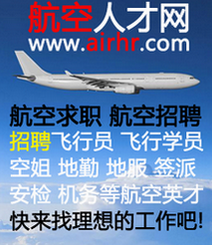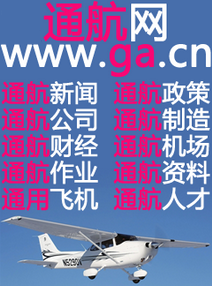直升机飞行手册 Helicopter Flying Handbook
时间:2014-11-09 12:30来源:FAA 作者:直升机翻译 点击:次
|
To view this page ensure that Adobe Flash Player version 9.0.124 or greater is installed. In piston helicopters, the collective pitch is the primary control for manifold pressure, and the throttle is the primary control for rpm. However, the collective pitch control also influences rpm, and the throttle also influences manifold pressure; therefore, each is considered to be a secondary control of the other’s function. Both the tachometer (rpm indicator) and the manifold pressure gauge must be analyzed to determine which control to use. Figureillustrates this relationship. Cyclic Pitch Control The cyclic pitch control is usually projected upward from the cockpit floor, between the pilot’s legs or between the two pilot seats in some models. [Figure 3-4] This primary flight control allows the pilot to fly the helicopter in any direction of travel: forward, rearward, left, and right. As discussed in Chapter 3, Aerodynamics of Flight, the total lift force is always perpendicular to the tip-path plane of the main rotor. The purpose of the cyclic pitch control is to tilt the tip-path plane in the direction of the desired horizontal direction. The cyclic controls the rotor disk tilt versus the horizon, which directs the rotor disk thrust to enable the pilot to control the direction of travel of the helicopter. The rotor disk tilts in the same direction the cyclic pitch control is moved. If the cyclic is moved forward, the rotor disk tilts forward; if the cyclic is moved aft, the disk tilts aft, and so on. Because the rotor disk acts like a gyro, the mechanical linkages for the cyclic control rods are rigged in such a way that they decrease the pitch angle of the rotor blade approximately 90° before it reaches the direction of cyclic displacement, and increase the pitch angle of the rotor blade approximately 90° after it passes the direction of displacement. An increase in pitch angle increases AOA; a decrease in pitch angle decreases AOA. For example, if the cyclic is moved forward, the AOA decreases as the rotor blade passes the right side of the helicopter and increases on the left side. This results in maximum downward deflection of the rotor blade in front of the helicopter and maximum upward deflection behind it, causing the rotor disk to tilt forward. Antitorque Pedals The antitorque pedals, located on the cabin floor by the pilot’s feet, control the pitch and therefore the thrust of the tail rotor blades or other antitorque system. See Chapter 5, Helicopter Components, Sections, and Systems, for a discussion on these other systems. [Figure 3-5] Newton’s Third Law was discussed in Chapter 2, General Aerodynamics, stating that for every action there is an equal and opposite reaction. This law applies to the helicopter fuselage and its rotation in the opposite direction of the main rotor blades unless counteracted and controlled. To make flight possible and to compensate for this torque, most helicopter designs incorporate an antitorque rotor or tail rotor. The antitorque pedals allow the pilot to control the pitch angle of the tail rotor blades, which in forward flight puts the helicopter in longitudinal trim and, while at a hover, enables the pilot to turn the helicopter 360°. The antitorque pedals are connected to the pitch change mechanism on the tail rotor gearbox and allow the pitch angle on the tail rotor blades to be increased or decreased. Heading Control The tail rotor is used to control the heading of the helicopter while hovering or when making hovering turns, as well as counteracting the torque of the main rotor. Hovering turns are commonly referred to as “pedal turns.” At speeds above translational lift, the pedals are used to compensate for torque to put the helicopter in longitudinal trim so that coordinated flight can be maintained. The cyclic control is used to change heading by making a turn to the desired direction. The thrust of the tail rotor depends on the pitch angle of the tail rotor blades. This pitch angle can be positive, negative, or zero. A positive pitch angle tends to move the tail to the right. A negative pitch angle moves the tail to the left, while no thrust is produced with a zero pitch angle. The maximum positive pitch angle of the tail rotor is generally greater than the maximum negative pitch angle available. This is because the primary purpose of the tail rotor is to counteract the torque of the main rotor. The capability for tail rotors to produce thrust to the left (negative pitch angle) is necessary, because during autorotation the drag of the transmission tends to yaw the nose to the left, or in the same direction the main rotor is turning. |
- 共137页:
- 上一页
- 1
- 2
- 3
- 4
- 5
- 6
- 7
- 8
- 9
- 10
- 11
- 12
- 13
- 14
- 15
- 16
- 17
- 18
- 19
- 20
- 21
- 22
- 23
- 24
- 25
- 26
- 27
- 28
- 29
- 30
- 31
- 32
- 33
- 34
- 35
- 36
- 37
- 38
- 39
- 40
- 41
- 42
- 43
- 44
- 45
- 46
- 47
- 48
- 49
- 50
- 51
- 52
- 53
- 54
- 55
- 56
- 57
- 58
- 59
- 60
- 61
- 62
- 63
- 64
- 65
- 66
- 67
- 68
- 69
- 70
- 71
- 72
- 73
- 74
- 75
- 76
- 77
- 78
- 79
- 80
- 81
- 82
- 83
- 84
- 85
- 86
- 87
- 88
- 89
- 90
- 91
- 92
- 93
- 94
- 95
- 96
- 97
- 98
- 99
- 100
- 101
- 102
- 103
- 104
- 105
- 106
- 107
- 108
- 109
- 110
- 111
- 112
- 113
- 114
- 115
- 116
- 117
- 118
- 119
- 120
- 121
- 122
- 123
- 124
- 125
- 126
- 127
- 128
- 129
- 130
- 131
- 132
- 133
- 134
- 135
- 136
- 137
- 下一页


